Elevate your filmmaking with these five cinematic dolly zoom techniques. The Vertical Ascent creates disorientation through upward movement, while the Circular Orbit Reveal combines circular motion with zoom adjustments. For an unsettling effect, try the Diagonal Descent Compression, which compresses the background around your subject. The Forward Push Perspective Shift adds momentum and urgency to your scenes. Finally, the Spiral Vertigo Effect combines dolly zoom with circular movement for intense disorientation. Each technique offers unique visual impact and emotional resonance. Master these methods, and you'll access new dimensions of storytelling power in your films.
Key Takeaways
- Vertical Ascent Dolly Zoom creates disorientation through upward movement and zoom, effective for shock or realization scenes.
- Circular Orbit Reveal combines circular camera movement with zoom adjustments, ideal for revealing clues or character transformations.
- Diagonal Descent Compression amplifies tension by compressing the background around the subject, perfect for thriller or horror scenes.
- Forward Push Perspective Shift creates momentum and urgency by moving the camera forward while zooming out.
- Spiral Vertigo Effect heightens disorientation by combining dolly zoom with circular movement, suitable for depicting psychological distress.
Vertical Ascent Dolly Zoom
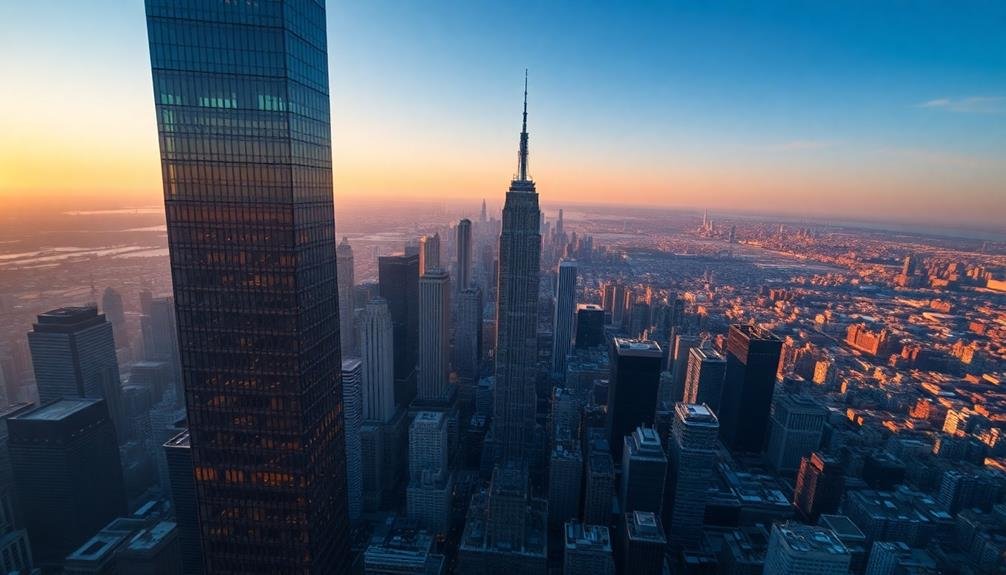
Vertigo-inducing and visually striking, the vertical ascent dolly zoom creates a unique sense of disorientation. This technique combines a vertical camera movement with a simultaneous zoom, resulting in a distorted perspective that can heighten tension or convey a character's emotional state.
To execute this shot, you'll need a crane or drone capable of smooth vertical movement. As you raise the camera, zoom out at a coordinated rate to maintain the subject's size in the frame. The background will appear to stretch and warp, while the foreground remains relatively stable.
This effect works particularly well in scenes depicting realization, shock, or a sudden shift in a character's worldview. It's also effective for revealing vast landscapes or emphasizing the scale of buildings or natural formations.
When planning your shot, consider the emotional impact you want to achieve. A slower ascent can create a gradual sense of unease, while a rapid movement might convey sudden panic or awe.
Experiment with different speeds and zoom ranges to find the perfect balance for your scene.
Circular Orbit Reveal
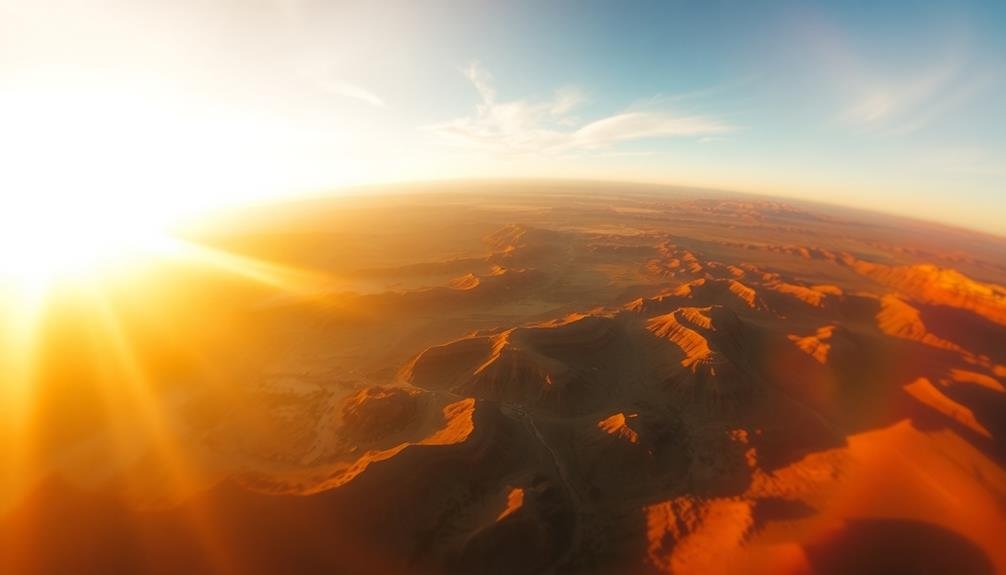
A mesmerizing dance of camera and subject, the circular orbit reveal is a dynamic dolly zoom technique that adds depth and intrigue to your shots. You'll move the camera in a circular path around your subject while simultaneously adjusting the zoom to maintain a consistent frame size. This creates a swirling, disorienting effect that can heighten tension or reveal new perspectives.
To execute this technique, you'll need a dolly track set up in a circular configuration or a steadicam operator skilled in smooth, circular movements. As you orbit, zoom out if moving closer to the subject or zoom in if moving away. The key is to keep your subject the same size in the frame while the background shifts dramatically.
Consider these creative applications:
| Scene Type | Effect | Emotion |
|---|---|---|
| Mystery | Reveal clues | Intrigue |
| Action | Disorient viewer | Tension |
| Drama | Show character transformation | Empathy |
Practice timing your zoom with your circular movement to achieve a seamless effect. You can vary the speed of your orbit and zoom to intensify or soften the impact. Remember, this technique works best when used sparingly for maximum impact in pivotal scenes.
Diagonal Descent Compression
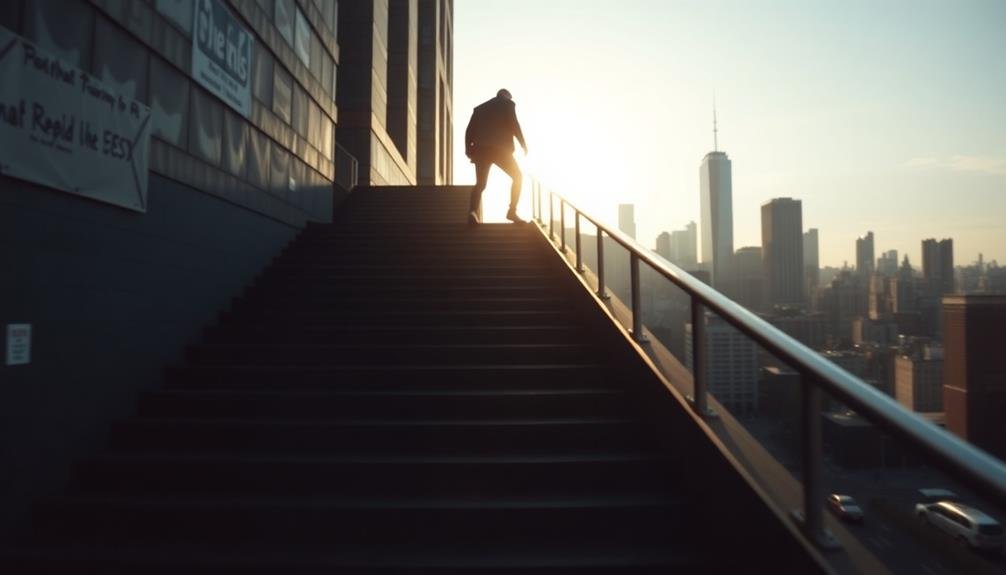
While circular movements can disorient, diagonal descents compress space in a uniquely unsettling way.
To execute a Diagonal Descent Compression, you'll need to combine a dolly zoom with a downward camera movement. Start by positioning your camera at a high angle, focused on your subject. As you descend diagonally towards the subject, simultaneously adjust your zoom to maintain the subject's size in the frame.
This technique creates a disorienting effect where the background appears to close in on the subject, amplifying tension or unease. It's particularly effective in thriller or horror scenes, where you want to convey a sense of impending doom or claustrophobia.
To enhance the impact, consider using a wide-angle lens, which will exaggerate the perspective distortion.
Pay attention to your subject's positioning within the frame. As you descend, you may need to adjust your framing to keep them centered or to create intentional compositional imbalance.
Practice this move extensively before attempting it on set, as coordinating the diagonal movement, zoom, and focus can be challenging.
Forward Push Perspective Shift
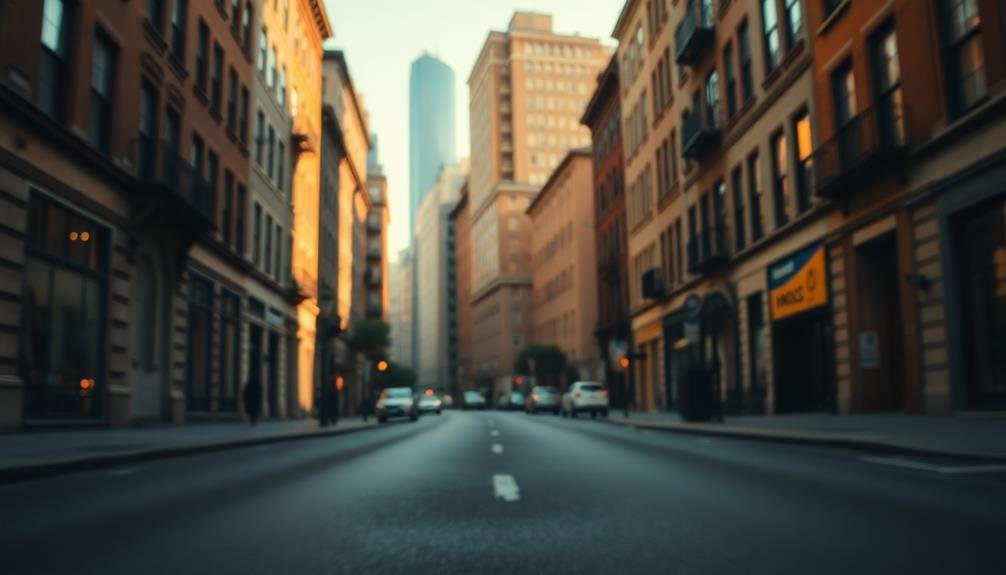
Forward Push Perspective Shifts create a powerful sense of momentum and urgency in cinematic scenes. You'll achieve this effect by moving the camera forward while simultaneously zooming out. As you push the dolly towards your subject, the background will appear to stretch away, creating a disorienting yet enchanting visual experience.
To execute this technique effectively, you'll need to coordinate your dolly movement and zoom speed precisely. Start with your subject framed tightly, then begin your forward push while smoothly zooming out. The goal is to maintain the subject's size in the frame while the background undergoes a dramatic transformation.
This technique is particularly effective for:
- Emphasizing a character's emotional state or realization
- Conveying a sense of impending danger or revelation
- Shifting between scenes or locations
You can enhance the impact of a Forward Push Perspective Shift by carefully choosing your background elements. Opt for environments with strong linear elements, such as hallways, streets, or bridges, to maximize the visual stretching effect.
Remember to reflect on your subject's positioning and make certain they remain the focal point throughout the shot.
Spiral Vertigo Effect
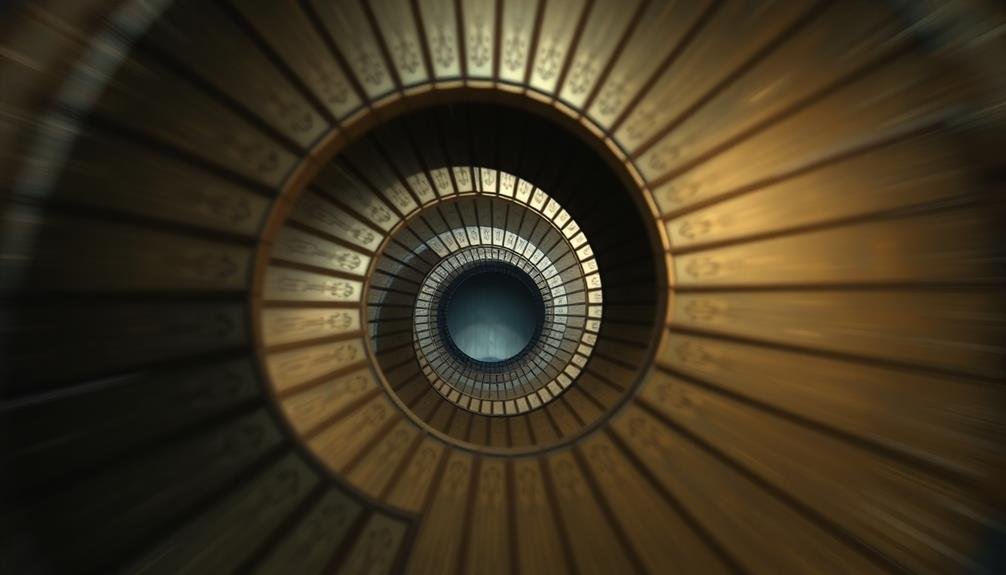
The dizzying Spiral Vertigo Effect takes the dolly zoom technique to new heights, creating a sense of disorientation and unease in your audience. To achieve this effect, you'll combine a dolly zoom with a circular camera movement around your subject. As you zoom in, move the camera in a spiral pattern, gradually getting closer to the focal point.
Start by setting up your dolly track in a circular formation around your subject. Begin with a wide-angle shot and slowly zoom in while simultaneously moving the camera along the circular track. As you progress, tighten the spiral by reducing the radius of your circular movement. This creates a swirling, disorienting effect that intensifies as you get closer to your subject.
The Spiral Vertigo Effect works particularly well in scenes depicting psychological distress, altered states of consciousness, or moments of intense revelation.
It's an advanced technique that requires precise coordination between camera movement and zoom. Practice the timing and pacing to guarantee a smooth, continuous motion throughout the shot.
You can enhance the effect in post-production by slightly increasing the frame rate or adding subtle motion blur to amplify the sense of dizziness and disorientation.
Frequently Asked Questions
What Camera Equipment Is Essential for Executing Dolly Zoom Techniques?
You'll need a camera, zoom lens, and a dolly or slider. Don't forget a sturdy tripod for stability. A focus puller can help maintain sharpness. Consider a motion control system for precise movements.
How Does Lens Choice Affect the Intensity of the Dolly Zoom Effect?
Your lens choice greatly impacts the dolly zoom's intensity. Wider lenses exaggerate the effect, creating more dramatic distortion, while longer lenses produce subtler results. You'll need to experiment to find the perfect balance for your shot.
Are There Any Post-Production Techniques to Enhance Dolly Zoom Shots?
You can enhance dolly zoom shots in post-production by adjusting frame rates, adding motion blur, or using digital zooming. You'll also want to fine-tune color grading and stabilize footage to amplify the effect's intensity.
What Are Common Mistakes to Avoid When Attempting Cinematic Dolly Zooms?
You'll want to avoid jerky movements, inconsistent speed, and incorrect zoom timing. Don't forget to maintain focus on your subject. Also, make certain you've got enough space and a smooth track for your dolly.
How Can Dolly Zoom Techniques Be Adapted for Handheld or Stabilized Camera Setups?
You can adapt dolly zoom for handheld setups by using a stabilizer or gimbal. Practice smooth, controlled movements while zooming. Try walking backwards or forwards instead of using a track. Experiment with different focal lengths for varied effects.
In Summary
You've now got five powerful dolly zoom techniques in your filmmaking arsenal. Whether you're ascending vertically, orbiting your subject, descending diagonally, pushing forward, or creating a spiral vertigo effect, these methods will add depth and drama to your shots. Don't be afraid to experiment and combine techniques for truly unique visuals. Remember, practice makes perfect, so get out there and start shooting. Your cinematic storytelling will never be the same!

As educators and advocates for responsible drone use, we’re committed to sharing our knowledge and expertise with aspiring aerial photographers.
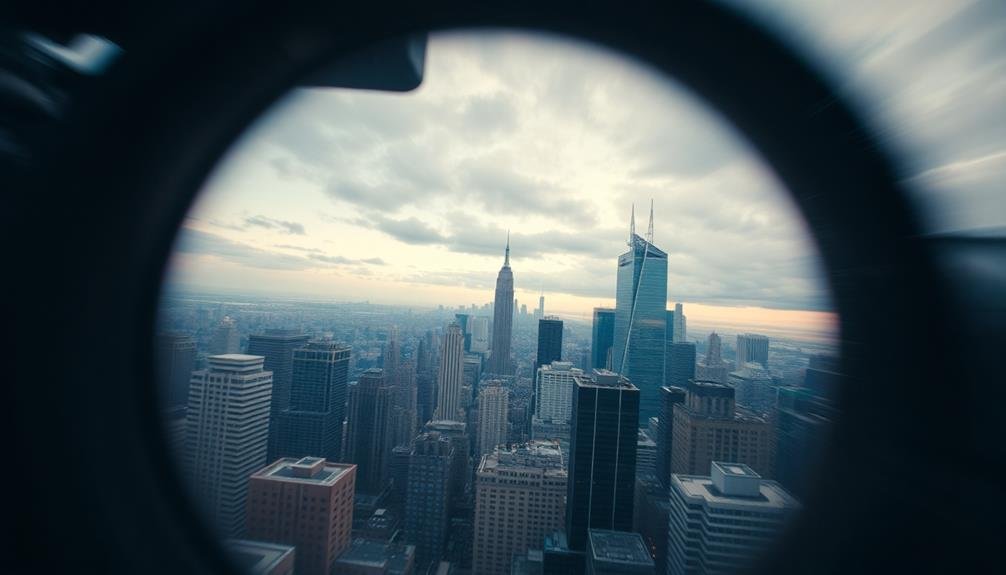



Leave a Reply